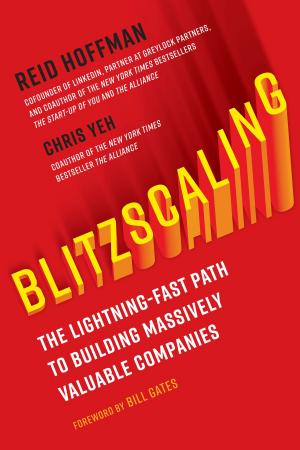Slack
Getting Past Burnout, Busywork, and the Myth of Total Efficiency
Business & Finance, Management & Leadership, Operations Research, Economics, Development & Growth, Decision Making & Problem Solving| Author: | Tom DeMarco | ISBN: | 9780767908993 |
| Publisher: | The Crown Publishing Group | Publication: | November 27, 2001 |
| Imprint: | Crown Business | Language: | English |
| Author: | Tom DeMarco |
| ISBN: | 9780767908993 |
| Publisher: | The Crown Publishing Group |
| Publication: | November 27, 2001 |
| Imprint: | Crown Business |
| Language: | English |
To most companies, efficiency means profits and growth. But what if your “efficient” company—the one with the reduced headcount and the “stretch” goals—is actually slowing down and losing money? What if your employees are burning out doing the work of two or more people, leaving them no time for planning, prioritizing, or even lunch? What if you’re losing employees faster than you can hire them? What if your superefficient company is suddenly falling behind?
Tom DeMarco, a leading management consultant to both Fortune 500 and up-and-coming companies, has discovered a counterintuitive principle that explains why efficiency improvement can sometimes make a company slow. If your real organizational goal is to become fast (responsive and agile), then he proposes that what you need is not more efficiency, but more slack.
What is “slack”? Slack is the degree of freedom in a company that allows it to change. It could be something as simple as adding an assistant to a department, letting high-priced talent spend less time at the photo copier and more time making key decisions. Slack could also appear in the way a company treats employees: instead of loading them up with overwork, a company designed with slack allows its people room to breathe, increase effectiveness, and reinvent themselves.
In thirty—three short chapters filled with creative learning tools and charts, you and your company can learn how to:
∑make sense of the Efficiency/Flexibility quandary
∑run directly toward risk instead of away from it
∑strengthen the creative role of middle management
∑make change and growth work together for even greater profits
A innovative approach that works for new- and old-economy companies alike, this revolutionary handbook will debunk commonly held assumptions about real-world management, and give you and your company a brand-new model for achieving and maintaining true effectiveness—and a healthier bottom line.
To most companies, efficiency means profits and growth. But what if your “efficient” company—the one with the reduced headcount and the “stretch” goals—is actually slowing down and losing money? What if your employees are burning out doing the work of two or more people, leaving them no time for planning, prioritizing, or even lunch? What if you’re losing employees faster than you can hire them? What if your superefficient company is suddenly falling behind?
Tom DeMarco, a leading management consultant to both Fortune 500 and up-and-coming companies, has discovered a counterintuitive principle that explains why efficiency improvement can sometimes make a company slow. If your real organizational goal is to become fast (responsive and agile), then he proposes that what you need is not more efficiency, but more slack.
What is “slack”? Slack is the degree of freedom in a company that allows it to change. It could be something as simple as adding an assistant to a department, letting high-priced talent spend less time at the photo copier and more time making key decisions. Slack could also appear in the way a company treats employees: instead of loading them up with overwork, a company designed with slack allows its people room to breathe, increase effectiveness, and reinvent themselves.
In thirty—three short chapters filled with creative learning tools and charts, you and your company can learn how to:
∑make sense of the Efficiency/Flexibility quandary
∑run directly toward risk instead of away from it
∑strengthen the creative role of middle management
∑make change and growth work together for even greater profits
A innovative approach that works for new- and old-economy companies alike, this revolutionary handbook will debunk commonly held assumptions about real-world management, and give you and your company a brand-new model for achieving and maintaining true effectiveness—and a healthier bottom line.















